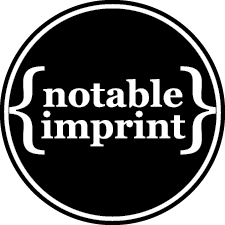Creating a Memorable Brand Identity with Logo Design
In business, your logo is the face of your brand. It is often your audience's first point of contact and acts as a symbol that encapsulates your values, goals, and personality. Creating a logo that perfectly captures your brand and leaves a lasting impression on your audience requires a lot of consideration and often plenty of trial and error. Here are 6 steps you should take while designing a logo to ensure you will create a memorable brand identity:
1. Define Your Brand Identity
Before starting the design process, it's crucial to understand your brand identity clearly. Who is your target audience, and what sets your brand apart from competitors? What goals do you want to achieve? And what values and emotions do you want your logo to convey?
Additionally, taking the time to define your brand’s personality is one of the most important steps you can take, as that is the basis for how you will present your brand to your audience, whether through visuals, copy or otherwise. By considering all of these factors, you can create a viable foundation that will guide the design process and ensure that your logo accurately reflects your brand identity.
2. Conduct Research
Great design is informed design. You should consider conducting some quality research into your target market and industry, including looking at what your competitors are doing. This will help you gain insights into the current design trends and visual language and identify what is currently resonating with audiences and what doesn’t work.
With successful logos within your industry and beyond, take the time to analyse them closely, noting what elements grab your attention and why. In doing so, you will be able to identify opportunities for differentiation and ensure that your logo stands out – a vital step when considering how crowded the market is these days.
3. Explore Different Ideas
Now that you have plenty of insights from your research, it’s time to brainstorm concepts and sketch out ideas! Start by exploring different visual elements that align with your brand identity, like symbols, typography and colours. Don’t be afraid to think outside the box and experiment – that is what this step is all about. By spending time to try out a wide range of concepts, and refining the ones that almost work or make sense with your brand, you’ll soon be able to find the perfect solution.
4. Keep It Simple
When it comes to logo design, simplicity is key. Your first instinct might be to create something overly complex or a design with many interesting facets. If your logo is too cluttered, though, it can overwhelm your audience and weaken your brand’s message.
Instead, aim for a clean, minimalist design that is easy to recognise and remember. Think of some of the most iconic logos, like Nike or Apple. They are all simple, immediately recognisable, work in different contexts, and stand the test of time. With your logo, you should aim for something that is similarly timeless, versatile across different mediums, and straightforward in its design – though not boring.
5. Choosing Your Colours and Typography
Colour and typography play a crucial role in shaping your brand’s visual identity, so it’s important to make the right choices for your logo.
Choose fonts that reflect your brand’s personality, whether it’s modern and polished, classic and timeless, quirky or otherwise. Similarly, you should select colours that evoke the emotions you are after and resonate with your target audience. To accomplish this, a useful step is to consider the psychological and symbolic associations of different colours and their impact on brand perception.
Red, for instance, often has negative connotations, such as anger and violence, although it also can be associated with passion, while blue is more calming and serene. A well-chosen colour palette can not only evoke a strong emotional response and help define your brand, but it can also make your logo stand out from the competition.
6. Seek Feedback
Once you’ve finished developing your initial concepts, it’s time to see how people respond to your proposed logo. Seek feedback from friends, colleagues, stakeholders if you have any, and even potential customers.
You may receive a variety of reactions, and it will be valuable to your brand to consider them all. Don’t be discouraged by constructive criticism; instead, view it as a helpful step towards establishing your true brand identity and incorporate it into the revised design. Remember, iteration is an integral part of any design process, so don’t be afraid to refine and rework your logo. Every draft is one step closer to uncovering a design that encapsulates your brand identity.
Similarly, if you are struggling to come up with a logo that works, even after multiple iterations, it may be helpful to seek out some advice from a professional graphic designer.
Lucky for you, Notable Imprint are experts when it comes to brand and logo design! We can even help you save a few steps by working with you from the beginning to create a logo that defines your brand and appeals to your target audience. Send us a message today and we’ll be glad to help!

